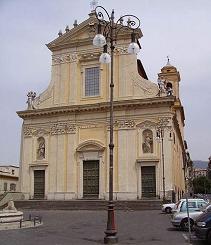The history of Marino
The origin of Marino can be dated back to the prehistoric age: in fact in its surroundings there are ruins of huts and proto-historical necropolis. From the 1st millennium BC Latin tribes sttled in this area. The ancient cities of Bovillae (Frattocchie), Mugilla (Santa Maria delle Mole, a frazione of the comune of Marino) and Ferentum (Marino itself) were part of the Latin League. In 846 AD, Bovillae - until then the largest settlement - was destroyed by the Saracens, and the population moved to the more easily defendable area of Ferentum, which was fortified under the new name of Marinum (according to Plinio the Elder it was called Castrimoenium).
During the Roman Republic, Marino was a summer resort for Roman patricians, who built luxurious villas in the area to escape the heat of Rome.
During the Middle Ages Marino become an strategic place (as via Appia could not be crossed, the road leading to Naples crossed Marino) , object of conquests of local feudal families. From 1090 it was a dominium of the Counts of Tusculum family, who built a castle around which gradually grouped the other constructions. The centre of the town was named Castra Mareni.
Later Marino was given to the Frangipane family (at the time very powerful) who had the property until 1266 when it was owned by the Orsini, another important Roman family. In 1347 Cola di Rienzo tried to conquer it with a long, vain siege. Bought in 1386 by the Caetani family, in 1489 it was finally acquired by the Colonna Family (thanks to Pope Martin V, member of this family) who maintained it until 1914.
During the Colonna's period the town's structure was radically transformed.
In 1571, Marino's people welcomed Marcantonio Colonna, a protagonist of the Battle of Lepanto, with a triumph, remembered yearly by the famous grape festival.
In 1780 the reopening of Via Appia to Napoli affected the importance of Marino and this explains why the town was generally ignored by Grand Tour travellers in their accounts.
In 1870 Marino, with the fall of Rome, became part of Italy in 1870.
On February 2, 1944, during World War II, Marino was heavily bombed by the US XII air force.
Surroundings
-
The Sacro Speco

An impressive complex of buildings which almost looks as if it is one with the surrounding rock...
To know more
-
Rocca Pia
Built on the place where Callisto II Borgia's Castle was situated...
-
Church of St.Peter
It was built on the rests of a roman villa...
Tivoli's attractions

Patrocinio Comune di Tivoli
Assessorato al Turismo



